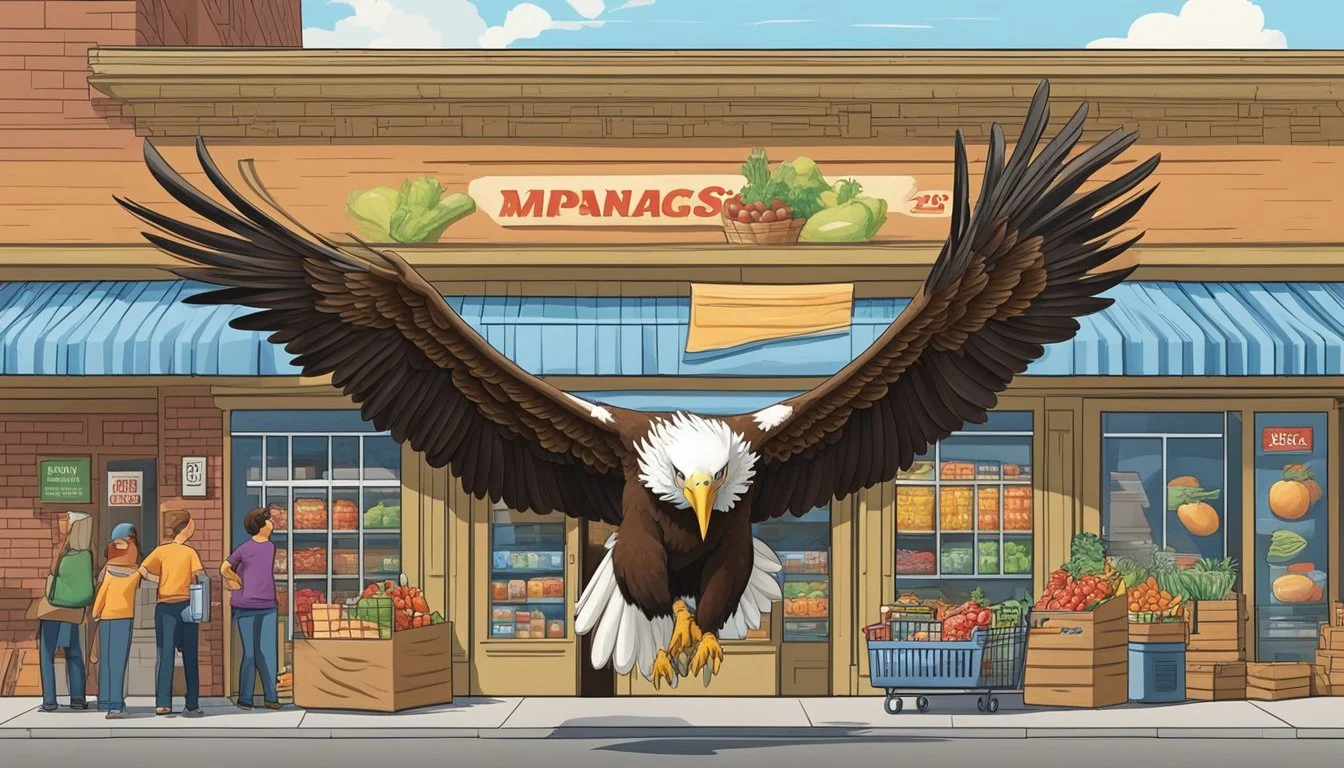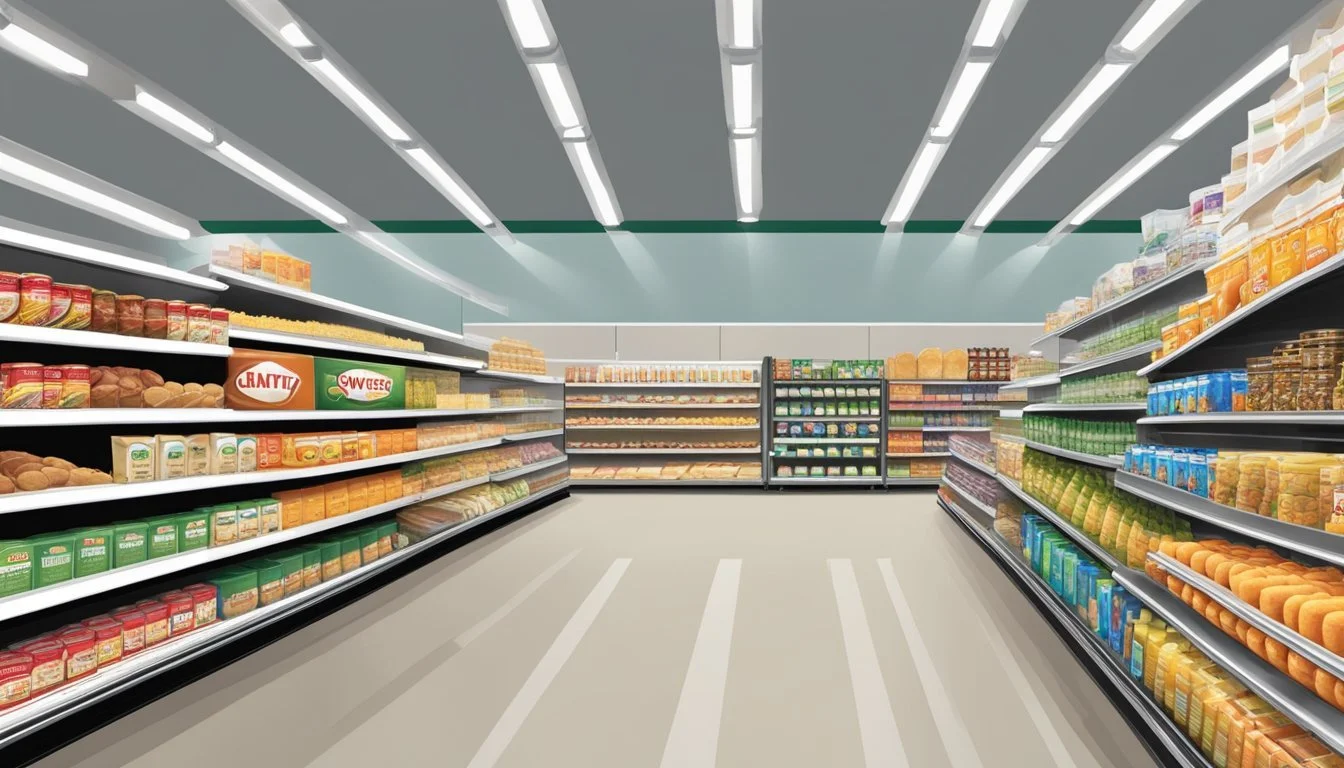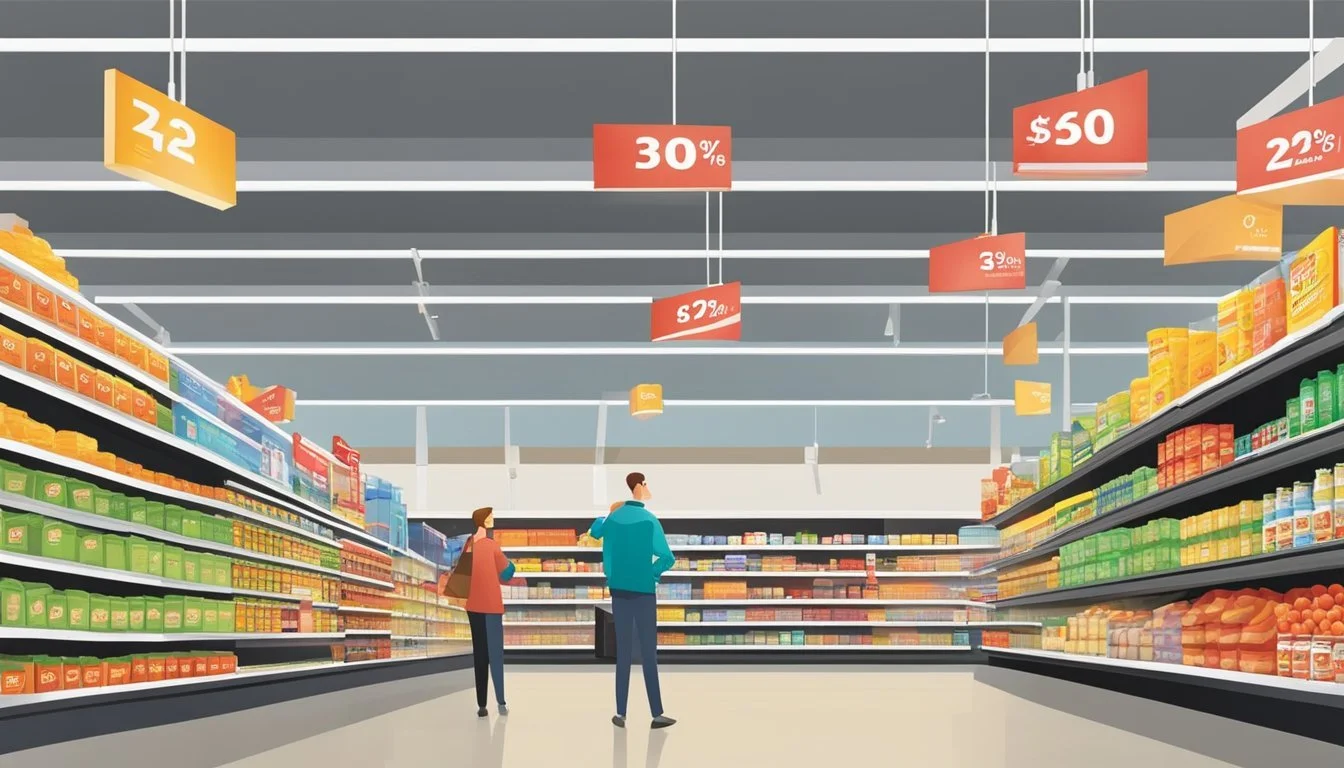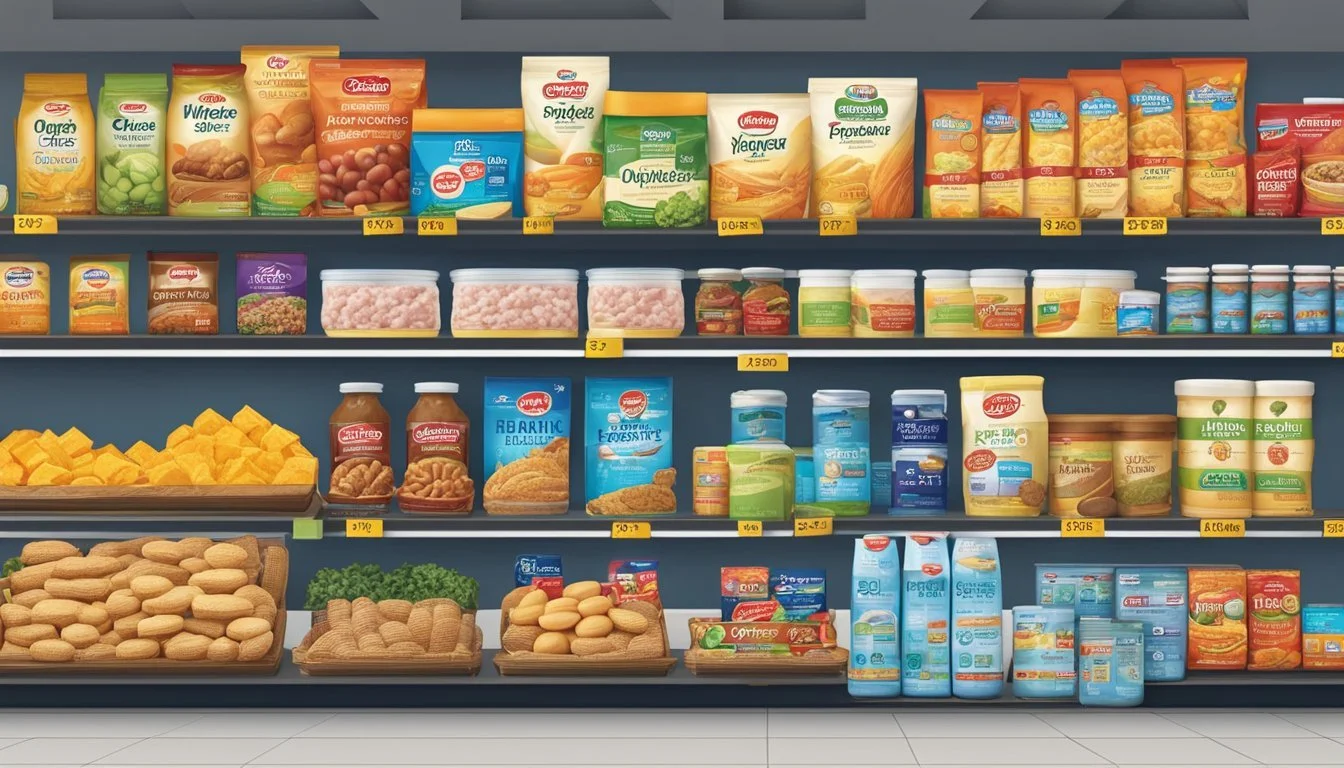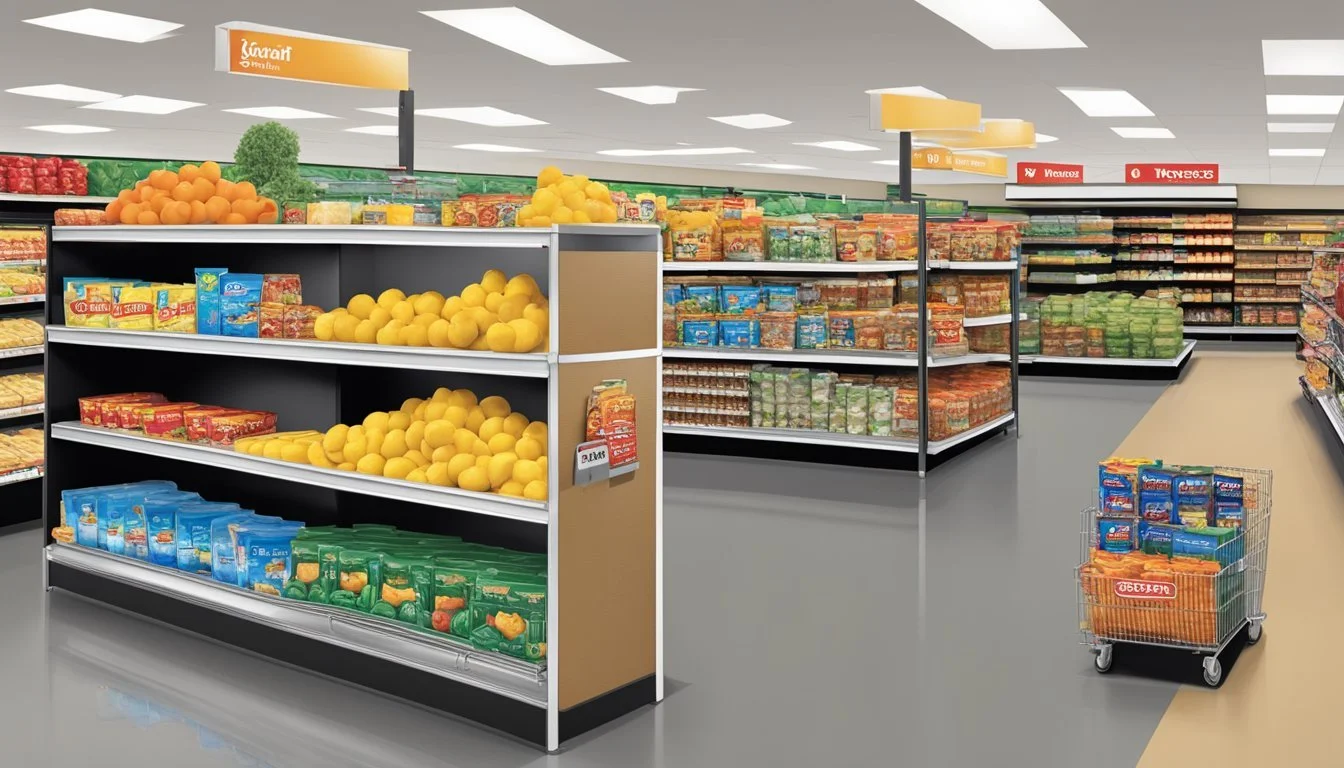Is Giant Eagle Cheaper Than Hy-Vee?
Comparing Grocery Store Prices
Part of Our Grocery Store Guide with Details on Giant Eagle Prices and Hy-Vee Prices
When comparing grocery stores, consumers often look for the balance between affordability and quality. Such a consideration brings popular chains like Giant Eagle and Hy-Vee to the forefront of the discussion. Both are known for their wide selection of goods and services, yet the question of which one offers lower prices is a common deliberation for shoppers aiming to stretch their dollar further.
Pricing strategies at these establishments play a significant role in the regional supermarket landscape. While studies and comparisons show that prices can vary, Giant Eagle tends to offer competitive pricing on many items, often featuring a good number of products on sale. However, it's essential for consumers to consider the overall shopping experience, including the availability of discounts, loyalty programs, and the quality of products offered by each retailer.
In terms of cost-savings, Hy-Vee has been acknowledged in consumer surveys and reports as one of the grocery chains with consistent value. The retailer's commitment to providing low prices without compromising on quality draws a steady stream of customers. Yet, whether Hy-Vee is categorically cheaper than Giant Eagle depends on various factors, including location, product types, and ongoing promotions, making it a subject worth examining for those looking to optimize their grocery spending.
Overview of Grocery Chain Landscape
The landscape of grocery chains in the U.S. encompasses a diverse range of stores that vary by size, pricing strategies, and regional availability. Different chains cater to a multitude of consumer needs, from budget shopping at Walmart and Aldi to the premium organic offerings of Whole Foods Market.
Comparison of Major Grocery Chains
Walmart remains a dominant player in the grocery segment, known for its extensive network and competitive pricing.
Kroger, a chain with a significant presence, typically offers low prices and had a total revenue of over $200 billion combined with Albertsons in fiscal 2021.
Aldi and Lidl provide smaller store formats with a focus on cost efficiency and have consistently low prices.
Costco and Sam's Club operate on a membership-based model offering bulk products at discounted prices.
Trader Joe's is favored for its unique product selection and has been recognized for providing high customer satisfaction.
Publix showcases strong regional loyalty, particularly in the Southeastern U.S., known for its customer service.
Sprouts Farmers Market specializes in natural and organic products, appealing to health-conscious consumers.
Amazon, entering the brick-and-mortar space with acquisitions like Whole Foods, brings e-commerce expertise to the supermarket industry.
Regional Presence of Grocery Chains
Chains like Kroger, Albertsons, and Safeway have a widespread national presence with numerous store locations across many states.
H-E-B, Meijer, and Hy-Vee exhibit a more concentrated regional focus but maintain a significant market influence in their respective areas.
Trader Joe’s and Whole Foods Market (owned by Amazon) have cultivated devoted customer bases in various metro areas and continue to expand.
Publix is deeply rooted in the Southeast, whereas chains like Wegmans and Market Basket enjoy a strong presence in the Northeast.
Fareway and Food Lion are examples of regional chains that provide competition to national brands and often prioritize local sourcing.
By comparing pricing, store count, and regional availability, consumers can make informed decisions about where to shop for their grocery needs. Each chain offers a unique proposition, whether it's pricing, convenience, product variety, or the shopping experience.
Price Analysis and Comparison
When comparing supermarket chains such as Giant Eagle and Hy-Vee, one must consider a variety of factors that influence pricing. To assist consumers in understanding where they may find more cost-effective shopping options, this section delves into how prices are affected at grocery stores and ways to maximize savings when shopping.
Factors Affecting Prices at Grocery Stores
Location: Geographic location can greatly influence the prices due to the cost of living, transportation, and regional competition. For instance, Hy-Vee stores, primarily located in the Midwest, may offer different prices than Giant Eagle, which operates in several states including Pennsylvania and Ohio.
Store Brand Offerings: Both supermarkets offer their store brands, which are typically priced lower than national brand products. Giant Eagle carries its namesake brand, while Hy-Vee offers the Hy-Vee label. Store brands can offer significant savings and affect overall price perception.
Supply Chain Efficiency: Efficiency in sourcing products and managing inventory can result in lower prices. A supermarket that has optimized its supply chain may be able to pass these savings on to customers.
Sale and Promotions: Both chains feature weekly sales and promotions, which can impact the final receipt total. Being aware of these deals can lead to substantial discounts on a shopper’s bill.
Strategies for Price Savings at Supermarkets
Loyalty Programs: Enrolling in supermarket loyalty programs can yield discounts, deals, and rewards. For example, Hy-Vee’s Fuel Saver + Perks program offers fuel discounts and savings on in-store purchases, while Giant Eagle’s fuelperks! offers similar benefits.
Coupons and Ad Match: Utilizing coupons and taking advantage of price match policies when available can result in direct savings. Shoppers should check both Giant Eagle and Hy-Vee’s coupon policies for maximizing their potential savings.
Bulk Purchases and Off-Season Shopping: Buying in bulk and purchasing items out of season when they are on clearance can lead to lower costs per unit.
Assessing Price per Unit: When shopping, customers should compare the price per unit rather than the overall cost to determine which store offers the lowest price for the quantity they need.
By understanding these factors and strategies, consumers can better navigate price variations between Giant Eagle and Hy-Vee, ultimately finding the best deals to fit their grocery shopping needs.
Assessing Product Selection and Quality
When comparing Giant Eagle to Hy-Vee, specific focus on the diversity and caliber of their produce, meats, dairy, and bakery items provides insight into their value propositions.
Availability of Produce and Meats
Giant Eagle offers a wide variety of fresh vegetables, including staples like potatoes, cucumbers, and bananas. Their organic produce selection caters to health-conscious consumers. The meat section is well-stocked with various cuts and types, such as bacon and other meats, ensuring availability for diverse culinary needs.
Hy-Vee similarly boasts an extensive range of produce, emphasizing freshness and variety. They are known for their premium meat offerings, with an array of options from everyday meats to specialty cuts meant for discerning tastes.
Quality of Dairy and Bakery Products
Dairy products at Giant Eagle, including essentials like butter and milk, maintain a standard of quality that customers expect. The bakery section is notable for its broad assortment of freshly baked goods, from bread to pastries.
Hy-Vee’s dairy selection is comparable, providing a range of high-quality options. Their bakery stands out with a reputation for quality, offering a rich selection of freshly made products. Both retailers value the importance of providing fresh, quality items in these categories.
Services and Amenities Comparison
When comparing Giant Eagle to Hy-Vee, one must consider the services and amenities each retailer offers to understand the full scope of their shopping experience. These offerings, particularly in the pharmacy and checkout areas, are key to customer satisfaction and convenience.
Pharmacy and Health Services
Giant Eagle stands out with its comprehensive pharmacy services which include a wide range of vaccinations, personalized consultations, and the convenience of having pharmacies within many of its locations. They also partner with national chains like CVS to provide benefits to their pharmacy customers.
Hy-Vee, on the other hand, has a robust health market and typically features a pharmacy section that offers similar vaccination services, potentially edging out competitors with onsite dietitians and health screenings. Both retailers prioritize easy access to pharmacists and health-related services.
Convenience and Checkout Experience
Focusing on checkout experience, Giant Eagle has implemented technologies like Scan Pay & Go to speed up the process and has a family-friendly approach with options for curbside pickup and delivery. Their deli section tends to add to the convenience by providing readymade foods.
At Hy-Vee, the checkout process is designed to be efficient and customer-centric. It also offers self-checkout options to cater to shoppers who prefer a contactless and fast exit. Like Giant Eagle, Hy-Vee provides a remarkable division specializing in deli and ready-to-eat meals, contributing to the overall shopping convenience.
Loyalty and Discount Programs
Giant Eagle and Hy-Vee both offer loyalty programs aimed at providing value to their customers through various rewards and discounts. These programs are designed to enhance the shopping experience by offering more ways to save.
Membership Benefits
Giant Eagle's loyalty program, known as myPerks, gives shoppers the opportunity to earn points toward groceries and gas. The myPerks program is an evolution of the previous fuelperks+ program, enhancing the ways customers can accumulate rewards. Members can enjoy exclusive savings and load eCoupons directly onto their Giant Eagle Advantage Card.
Hy-Vee's loyalty offering includes a "Red Line" concierge service, providing members with access to a dedicated customer assistance line. Additionally, Hy-Vee allows personal shopping services which add a layer of convenience to the member's shopping experience.
Exclusive Discounts and Offers
Giant Eagle:
Weekly Sales: Access to special weekly discounts on a variety of products.
eCoupons: Ability to clip digital coupons directly to the Advantage Card for instant savings at checkout.
Fuel Discounts: Earn points for money off per gallon at Giant Eagle GetGo fuel stations.
Hy-Vee:
Fuel Saver + Perks: Members can save on fuel after purchasing selected grocery items.
Personalized Deals: Tailored discounts and offers sent to members based on their shopping habits.
Special Promotions: Access to exclusive sales events and deals throughout the year.
Both stores' programs are designed to generate substantial savings for their loyal customers, creating a competitive edge to retain shoppers through rewards and tailored offers.
Consumer Experience
When assessing the consumer experience between Giant Eagle and Hy-Vee, it is integral to consider customer satisfaction and the overall shopping experience. These factors are typically influenced by store policies, product selection, and service quality.
Customer Satisfaction and Ratings
Giant Eagle and Hy-Vee are both renowned for their commitment to customer satisfaction. Surveys and consumer reports often reflect the sentiment of loyal customers. For instance, Consumer Reports might rate the stores based on various attributes such as cleanliness, product variety, and customer service. These ratings can significantly impact a consumer's choice of grocery store.
Giant Eagle:
Surveys typically highlight the store's extensive rewards program and specialty departments.
Ratings often praise the store's fresh produce and quality meat selection.
Hy-Vee:
Customer feedback commonly commends the store’s friendly staff and the cleanliness of the shopping environment.
Ratings might favor Hy-Vee's emphasis on health and wellness offerings within the store.
Comparison of Shopping Experience
The shopping experience at Giant Eagle versus Hy-Vee can vary based on several factors, including store layout, product availability, and the checkout process.
Giant Eagle:
Customers may find a diverse selection of goods, with a focus on specialty items.
The target consumer often appreciates the store's emphasis on local and organic options.
Hy-Vee:
Shoppers often enjoy the additional services like in-store dining and online shopping options.
Consumer reports might highlight Hy-Vee's innovative use of technology to streamline the shopping experience.
Impact of Specialized Diets and Preferences
When comparing grocery store chains such as Giant Eagle and Hy-Vee, one significant aspect to consider is the impact of specialized diets and preferences on a customer's shopping experience. They often evaluate their options based on the range and pricing of diet-specific and healthy products.
Healthy and Organic Options
Giant Eagle and Hy-Vee both cater to consumers focusing on healthy eating habits. Giant Eagle offers a Market District line which includes a variety of organic and natural foods, while Hy-Vee has a HealthMarket section with a wide array of healthy options. Customers seeking organic produce can usually find a diverse selection at both stores, though the range and prices may vary based on location and seasonality.
Organic Produce Availability: Both stores offer organic fruits and vegetables, which cater to health-conscious buyers.
Meal Plan Integration: Customers looking for ingredients to fit specific healthy meal plans can generally find suitable options.
Diet-Specific Product Availability
Shoppers following specific diet plans such as gluten-free, keto, or vegan, need stores that provide a breadth of suitable products. Giant Eagle and Hy-Vee have made strides in accommodating these diets.
Gluten-Free Products: Aisles and sections are typically dedicated to gluten-free products, making it easier for shoppers to identify options that suit their dietary restrictions.
Keto and Vegan Products: Both chains have responded to the growing demand for keto and vegan products by expanding their inventories to include specialty items for these diets.
The availability of diet-specific products might differ between stores, and while one chain may offer competitive prices on certain items, the other may boast a better selection. Shoppers with specialized diets should check both Giant Eagle and Hy-Vee to determine which aligns best with their preferences and budget.
Budget-Friendly Grocery Shopping
When embarking on the quest for cost-effective groceries, shoppers often weigh options like Giant Eagle and Hy-Vee. Key strategies involve carefully planned grocery lists and brand comparisons to ensure savings without sacrificing quality.
Optimizing Grocery Lists for Savings
For consumers aiming to trim their grocery bills, the creation of a strategic shopping list is crucial. A family of four can achieve significant savings by planning meals around sales and seasonal produce, increasing the amount of cheap food that stretches across multiple meals. Shoppers have noted that stores like Walmart tend to offer lower prices in comparison to Giant Eagle, suggesting that price-conscious consumers should compare similar items across multiple stores, including Hy-Vee, before making their purchases.
Plan Around Sales: Check weekly flyers for both Giant Eagle and Hy-Vee to include sale items in meal planning.
Buy in Bulk: Purchase larger quantities of non-perishable items when they are on offer.
Seasonal Produce: Opt for fruits and vegetables that are in season to ensure lower prices and better freshness.
Comparison of Store Brands and National Brands
Shoppers on a budget may consider store brands as a means to cut costs without compromising on quality. Generic store brands are typically cheaper than national brands and can help families keep their expenses low.
Price Comparison:
National Brand Cereal: $3.50
Store Brand Cereal: $2.50
Quality Considerations: Taste and quality of store brands often rival that of national brands, making them a smart choice for frugal shoppers.
By focusing on deals and opting for the generic version of products, grocery shoppers can maintain a balance between affordability and quality.
Understanding Regional Variations
When comparing the grocery chains Giant Eagle and Hy-Vee, it is essential to consider the regional differences that significantly impact availability and pricing. These disparities arise from factors like local competition, transportation costs, and regional demand.
Grocery Options in the Midwest
In the Midwest, shoppers encounter a variety of grocery store options, notably including Hy-Vee, which has a strong presence in states such as Iowa and Nebraska. Meanwhile, Giant Eagle is a significant competitor in the Midwest as well, primarily in Ohio and Pennsylvania. Availability varies by location, influencing pricing; for example, areas with a denser Hy-Vee presence might see more competitive or lower prices due to the chain's regional familiarity and tailored supply chain strategies.
Notable states with Hy-Vee presence:
Iowa
Nebraska
Illinois
Minnesota
Notable states with Giant Eagle presence:
Ohio
Pennsylvania
Indiana
West Virginia
Maryland
Availability and Pricing in the Northeast
On the other hand, the Northeast sees a different grocery landscape. Giant Eagle operates in parts of Maryland and West Virginia, where the chain may adapt its pricing according to the local market dynamics, which can include factors like the local economy and distribution networks. For instance, in areas like Morgantown, West Virginia, shoppers might find pricing strategies that reflect the demographics and competitive pressures of that region. Pricing at Giant Eagle may be influenced by proximity to distribution centers and the variety of brands carried by each store, which is responsive to the tastes and preferences of the Northeastern customer base.
Grocery Shopping Convenience
When shopping for groceries at Giant Eagle or Hy-Vee, customers look for efficiency and ease, from the availability of various product options to the smoothness of the shopping process, both online and in-store.
Online Ordering and Delivery Services
Giant Eagle offers a user-friendly online ordering system, allowing customers to purchase a range of items including prepared foods, snacks, frozen foods, and pantry staples like peanut butter and eggs. Their delivery service ensures that groceries reach customers' doorsteps, bringing convenience to those who prefer to shop from home. Hy-Vee, similarly, provides robust online shopping options with efficient delivery services. The retailer also offers a "Hy-Vee Aisles Online" feature, which is conducive to quick and seamless ordering of essentials like bread and apples. Both stores incorporate regular online promotions on various products.
In-Store Navigation and Product Accessibility
Navigating a grocery store should be intuitive, and both Giant Eagle and Hy-Vee structure their aisles for straightforward access to essentials. For instance, shoppers can easily locate tomatoes in the produce section, prominently displayed alongside fresh fruits and vegetables. Frozen foods are methodically arranged, simplifying the search for quick dinner options. Giant Eagle places emphasis on the accessibility of snacks by positioning them along highly trafficked aisles. Conversely, Hy-Vee takes pride in the diversity of its prepared food offerings, which are conveniently accessible for those seeking ready-to-eat meals. Both stores offer various brands of peanut butter and bread, ensuring that customers can find their preferred products without hassle.
Final Remarks
When comparing grocery store prices, focusing on specific items and overall trends is crucial. In the case of Giant Eagle versus Hy-Vee, Giant Eagle offers competitive pricing that can result in modest savings for shoppers. Considering an analysis of 43 items where Giant Eagle's total came to $98.08 compared to another store's $105.57, shoppers saved approximately 7%.
Though not directly compared to Hy-Vee in the data, the principle of competitive pricing suggests that individual consumers’ decisions might lean towards Giant Eagle for those seeking budget-friendly options. However, pricing can vary by location, product selection, and availability of sales or promotions.
Hy-Vee is recognized in other regards, such as modern store facilities and being highly trusted, which can influence shopper loyalty and preference. Whether one store is categorically cheaper than the other depends on a myriad of factors, including regional pricing strategies and the shopper's selection of goods.
Shoppers are encouraged to consider their own shopping habits, including preferred products and convenience, alongside price savings. Utilizing weekly sales and loyalty programs might amplify savings and affect the total grocery bill. Consumers value both price and shopping experience, and each store offers distinct advantages.
It's advised for customers to perform regular price checks for their commonly purchased items and take advantage of special offers to optimize their grocery budget effectively.

